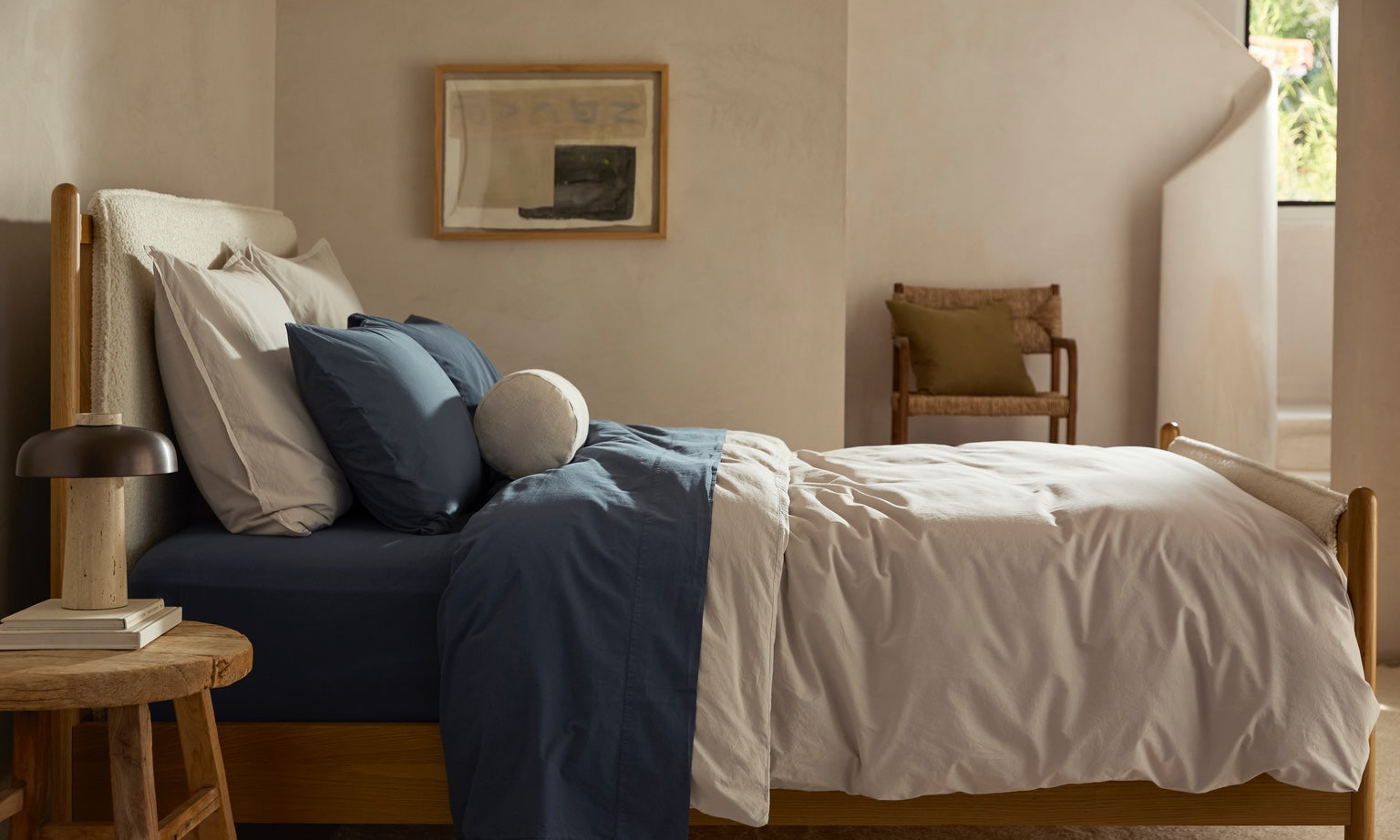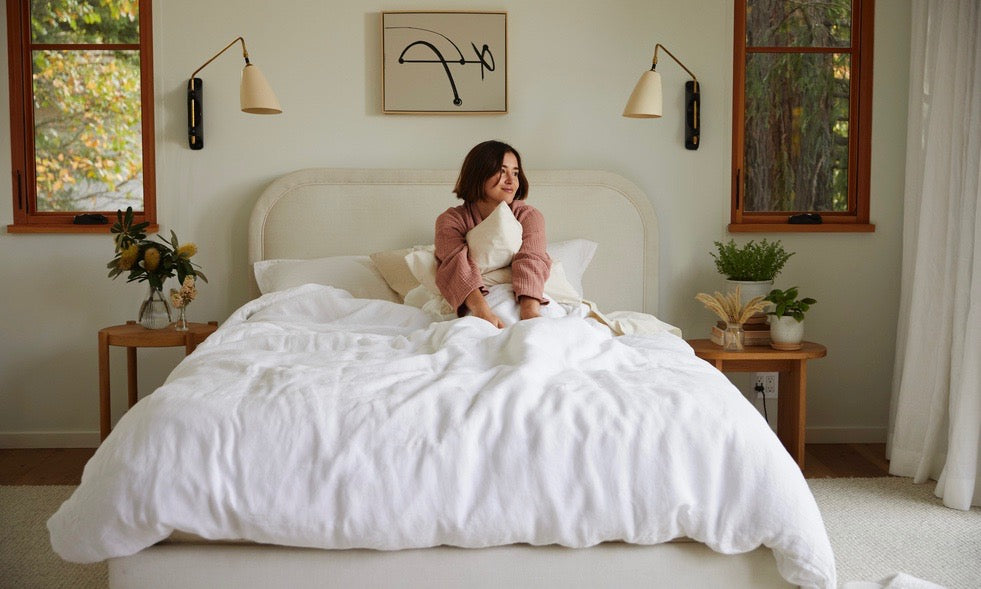
The Best Plants for Bedrooms and Bathrooms, With The Sill
The most beneficial plants for your home, handpicked by the experts.
Indoor plants go hand in hand with quality rest and relaxation – they’re proven to boost moods, decrease stress and filter indoor air toxins. We also love their look and vibe – plants have the power to transform your personal space into a spa-like retreat. Crushing on plants is a no-brainer, but choosing the right ones can be tricky. Are certain plants better for certain rooms? Is it unwise to buy a plant for its looks alone? We turned to the greenery experts at The Sill for guidance. Consider them your plant personal shoppers – they handpick easy-to-care for yet beautiful plants and teach you how to look after them. Below they share their top four picks for both the bedroom and the bathroom (best paired with our bedding and bath, naturally).
Plants for the Bedroom
Despite the obviously positive benefits of indoor plants, there’s a divide in opinion when it comes to keeping them in the bedroom. This is because most common houseplants emit carbon dioxide at night as a reverse response to photosynthesis (during the day, they do the opposite – converting carbon dioxide to oxygen! And P.S. the snake plant does this day and night #likeaboss). But you don’t have to worry. Humans and our furry friends produce much more carbon dioxide than plants produce. Houseplants actually improve indoor air quality significantly. Here we selected four plants that emit oxygen, humidity and negative ions (which remove dust, mold, bacteria and allergens from the air) making for better air quality – and ultimately a better well-being – in the bedroom. Plant floor-size foliage in baskets, trail vines across windowsills or display potted beauties on your nightstand.
Snake Plant
The Sansevieria, or snake plant, is almost indestructible when it comes to houseplants. Not only can it tolerate low light and neglect, it also thrives off it. Did we mention it filters the following toxins: formaldehyde, benzene, trichloroethylene, xylene and toluene?
Care: Moderate to low indirect light. Water 2x a month.
Rubber Tree
Its attractive foliage in moody hues makes this houseplant a natural drama queen. An added benefit, it filters out the toxin formaldehyde from indoor air. Commonly found in floor-size, its dark leaves make a bold statement in a white mod planter.
Care: Moderate to bright indirect light. Water 1x a week.
Philodendron
Known for its heart-shaped leaves and trailing vines, the philodendron is a vigorous grower with vines extending over 10 feet long (even indoors!). But, at merely 8” tall, it’s still apartment friendly. It comes in a variety of variegations, the brazil and the silver being two of our favorites.
Care: Moderate to low light. Water 2x a month.
Spider Plant
Its arching green and white striped leaves make the resilient spider plant perfect for a hanging planter or plant pedestal. An added bonus – it’s extremely easy to propagate. Simply cut off one of its “baby spiders” and place it in a cup of water.
Care: Moderate indirect light. Water 1x a week.
Plants for the Bathroom
If you’re a houseplant novice, choose one of these bathroom options. The warm, humid environment gives you a helping hand with plant care. The key is to choose a tropical plant; the bathroom mimics their natural tropical habitat. The most important thing to consider when choosing among the tropical plant options is how much sunlight your bathroom actually receives. Because most apartment bathrooms get minimal light, we suggest going with a plant will tolerate the lack of sunshine. If you’ve lucked out and there’s no escaping the sun in your space, opt for some humidity-tolerant succulents (like a fleshy aloe plant). To display, get creative. Try hanging a plant in the shower or sitting a potted one next to the sink.
Pothos
Almost the twin of the philodendron in terms of looks and care, the pothos is extremely tolerant of neglect, including low light and irregular watering. Pothos, meet awkward shower shelf. Match made in heaven.
Care: Moderate to low indirect light. Water 2x a month.
Air Plant
Not all plants need soil! Instead of using roots to absorb water and nutrients, air plants use their specialized leaves to absorb them from the air. These extremely adaptable plants will tolerate a wide range of conditions but are happiest in a spot that receives bright, indirect light and is high in humidity. Plus, they look rad displayed in geometric holders.
Care: Moderate to bright indirect light. Water 1x a week (by rinsing or misting).
Aloe
A structural beauty with added benefits, aloe can be used to help sooth skin, heal minor burns, reduce itch and more. It also filters the toxins benzene and formaldehyde from the air. Consider it the newest workhorse in your emergency kit that doubles as interior decor. Place it in a sunny spot and water very occasionally.
Care: Bright, indirect light. Water 1x a month.
Bird’s Nest Fern
Or any fern! Ferns come in a wide variety of colors and textures, but one of our favorites is the bird’s nest fern. Its large and wavy, bright green fronds resemble banana leaves. Hello, jungle vibes. Inside, the rosette’s fuzzy fronds resemble a bird’s nest (giving this fern its name). Ideal for the bathroom, ferns thrive in humid environments.
Care: Moderate to low indirect light. Water 1x a week.
Please note: Watering recommendations are estimates. There is no exact formula for watering your houseplants. Know that environmental factors, which slightly differ from home to home, affect watering recommendations. It’s always better to under water your plant than to over water it. Check in with your plant every couple of days to get to know it and its signals of thirst.










